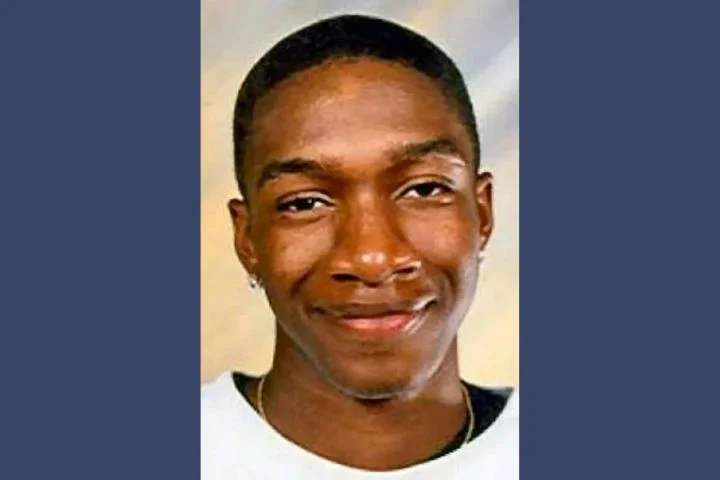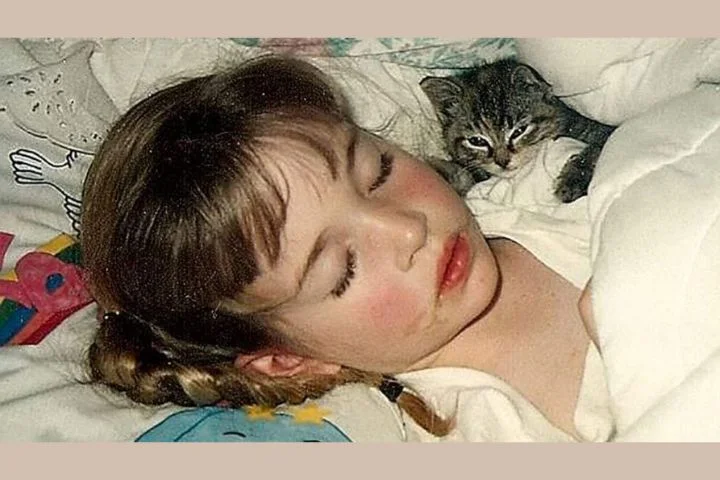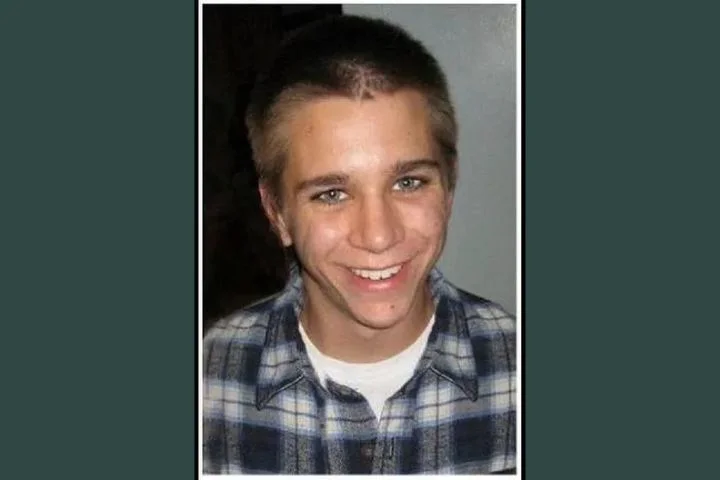June Goodman ate dinner with her sister, Pat Fawcett, on the evening of Friday, March 28, 2003. The 66-year-old was planning to retire from her job with the United States Postal Service in July and was already starting to make plans for what she would do with her free time. As she visited with her sister, June told her how much she was looking forward to this new phase of her life. The two women chatted until shortly after 8:00 pm, when June left to go home.
On her way back to her house, June decided she was in the mood for something sweet. She stopped at Ed’s Market in her hometown of Snowflake, Arizona, and browsed the aisles for a few minutes before selecting four chocolate bars. June paid for her candy at 8:25 pm and walked out of the market.
June’s exact movements after she left Ed’s Market that Friday night are unknown, but it is believed she went directly to her ranch-style home in rural Snowflake. June had been born and raised in the small Arizona town and was well-known in the community. Before taking a job with the postal service two decades earlier, June had worked as a teacher’s aide while raising her four children.
June’s house was located at the end of a quarter-mile-long gravel road. Although she had lived alone in the house since becoming a widow several years before, the area was considered very safe and June likely felt she had nothing to fear when she arrived home that Friday night. She carried her candy bars into the house and settled down to watch some television before bed.
June was scheduled to work on Saturday morning but failed to show up. Her co-workers were immediately concerned; June was a highly reliable employee who always arrived early to complete her rural delivery route. They got no answer when they tried to call June at home, so one of her co-workers started calling members of June’s family. When they reached June’s sister, Pat, she immediately decided to drive over to June’s house to check on her.
As soon as Pat arrived at her sister’s home, she knew that something was wrong. June’s work van was parked in its normal spot outside the house. The outside lights, which June would normally turn off when she went to bed, were still on and the sliding glass door leading to the backyard was half-open. When Pat went into the house, she found the television in the living room was on but there was no sign of June anywhere. Pat immediately called the police.
The Snowflake Police Department and the Navajo County Sheriff’s Office both responded to the call about the missing woman. From the start, they realized that this wasn’t going to be a typical missing person case, as June was related to U.S. Rep. Jeff Flake and state House Speaker Jake Flake, both powerful members of the GOP in Arizona. Although officials quickly determined that her relationship to the two men didn’t appear to have anything to do with her disappearance, authorities likely felt added pressure to resolve the case quickly.
Nothing appeared to be missing from June’s home, so robbery was ruled out as a possible motive. June’s purse and wallet, as well as all her jewelry and other valuables, were found untouched. Oddly, all of June’s shoes were also accounted for; she had been either barefoot or wearing only socks when she left her house.
Investigators noted that it appeared June had been sitting in her recliner watching television immediately before she disappeared. From where she would have been sitting, she would have had a perfect view of the gravel road that led to her home; it was possible that she had seen a vehicle driving towards her home and had gotten up to get a better look. Detectives believed that June had gone outside through the sliding glass back door, perhaps to greet someone. Since the door had still been open when Pat arrived at the house that morning, it appeared that June had never made it back into her house.
Investigators combed through June’s home but found nothing to indicate that any sort of struggle had taken place inside. It didn’t appear that anyone other than June had been inside the house the previous night; whatever had happened to June had happened after she walked out her back door.
There were no signs of a struggle anywhere outside the house, leading investigators to wonder if June had willingly gotten into someone’s vehicle, perhaps assuming they were just going to talk for a while. They were unable to find any footprints in the dusty gravel; it was impossible to tell which direction June had gone after she walked out her back door.
Unsure if June had gotten into a car or if she had simply wandered off on foot, officials launched a large-scale search of the area. Volunteers helped police scour the land for miles in all directions. Tracking dogs were brought in to assist in the ground search while helicopter crews scanned the area from above. They were unable to find any sign of June. Frustrated with the lack of progress, a spokesperson for the Navajo County Sheriff’s Office admitted that it seemed as if June had walked out her back door and vanished into thin air, leaving no clues behind.
Some people theorized that June might have had some kind of medical emergency that left her disoriented and caused her to wander out into the vast desert surrounding the area. Although investigators stated that anything was possible, they noted that June had been in excellent health at the time of her disappearance. As a letter carrier, she had to stay in shape in order to complete her mail route six days a week; June did so by religiously working out on her exercise bicycle every day. She had regular checkups with her doctor and did not have any known health issues.
A few days after June went missing, officials announced that they believed she had been abducted, although they didn’t release any information on why they had come to this conclusion. Her family announced that they were offering a $100,000 reward for information leading to the safe return of June, and they pleaded with the public for help in locating the missing woman.
During the first month of the investigation, detectives interviewed more than 300 people but made little progress in determining what had happened to June. After interviewing several of her co-workers, however, investigators learned of a disgruntled postal customer who had made threats against June the previous year. Detectives announced that they were interested in speaking with 43-year-old Patrick Michael Conn about June’s disappearance and asked for the public’s help in locating him.
Patrick had been one of June’s customers on her rural mail delivery route. He lived to the east of Snowflake and, like several other customers along the rural route, he had been irate when the U.S. Postal Service began to refuse to deliver mail to customers unless they used the designated addresses assigned to their homes. It seemed like a minor issue — millions of people across the country simply use their assigned address without questioning it — but for some reason, this infuriated Patrick.
After continually refusing to use his designated address for correspondence, Patrick had angrily confronted June about the fact that his mail was no longer being delivered. June had been so upset over the incident that she told her supervisor about it and filed a written report so her concerns about Patrick would remain on file.
After realizing that his angry outburst at June had failed to rectify the situation, Patrick drove to the post office and told several of June’s co-workers that he was going to kill June. She had been understandably upset when she learned of the threats; according to Pat, June had been deathly afraid of Patrick.
June had a good reason to be fearful. In February 2002, not long after he threatened to kill June, Patrick became the prime suspect in the murder of Donald Sewell, who had been shot and left along the side of Highway 77 by a Russian-made semi-automatic pistol. It had been the first homicide to take place in Snowflake, Arizona in decades. Patrick became a suspect when detectives learned that he had tried to sell a similar gun shortly after the murder.
Patrick appeared to flee the state shortly after Donald was killed and his whereabouts were unknown at the time of June’s murder. Although detectives believed that he had returned to Ohio, where he had grown up, they couldn’t rule out the theory that he might have remained in Arizona and had abducted and killed June.
In September 2003, Patrick was found hiding out in Columbus, Ohio; he was eventually extradited to Arizona to face earlier charges of child molestation. He was convicted and sentenced to 21 years in prison; he was never charged with Donald Sewell’s murder. It appears that he had been in Columbus at the time of June’s murder; although police continued to consider him a person of interest, they admitted that they had no evidence linking him to the crime and he was never charged.
Patrick wasn’t the only suspect in June’s case; detectives announced that they were also interested in talking to a local man who had repaired a television for June about a month before she disappeared. According to Pat, June had been unhappy with the repair job as her television continued to malfunction after the man brought it back. Pat had suggested having the man look at it again, but June had told her that the man had given her the creeps and she didn’t want to deal with him again.
The television repairman was later interviewed by police in May when he was in prison on unrelated drug charges. Detectives were unable to find any evidence that he had been involved in June’s disappearance.
June’s family continued to offer a $100,000 reward for information leading to June or the person responsible for her disappearance; they also had billboards placed in several locations around Snowflake to make sure the public remembered that June was still missing. Despite all their efforts, few tips were called in and the investigation eventually stalled and then went cold. By the end of 2003, the case had faded from the headlines.
By 2008, June’s family had come to terms with the fact that June was most likely dead. They decided to honor her life by holding a memorial service for her; though it was a great way to remember the wonderful person they had lost, it brought little closure and they continued to hope that they would one day learn exactly what happened to her.
The family marked the 15th anniversary of June’s disappearance in March 2018. Although June’s oldest son had died the previous year, the remainder of her large family — five siblings, three children, 19 grandchildren, and 25 great-grandchildren — still hoped to find June. Her oldest daughter, Donette, told a reporter that her mother had been a well-respected member of the community and didn’t deserve what happened to her.
Donette described her mother as someone who was always cheerful and had a positive outlook on life. People had been drawn to her warm personality and she had no known enemies. Her family had been heartbroken by the loss of their matriarch and wanted to make sure that whoever was responsible for her disappearance was brought to justice.
Although June’s missing person case has never been closed, it has been inactive for years. Detectives admit that the lack of witnesses hampered the investigation; to date, there is no evidence to indicate if she left voluntarily or if someone forced her to leave her home. They believe she was a victim of foul play, but despite following up on more than 5,000 leads they were never able to develop any solid suspects.
June Goodman was 66 years old when she went missing in 2003. She has green eyes and brown/gray hair, and at the time of her disappearance she was 5 feet 2 inches tall and weighed 130 pounds. She was last seen wearing a light purple sweatsuit but it’s possible she changed out of it before she vanished. It is believed she was barefoot or wearing only socks. If you have any information about June, please contact the Snowflake Police Department at 928–536–7500.






